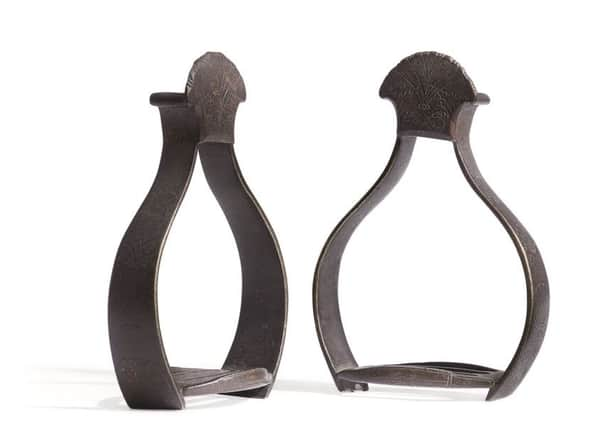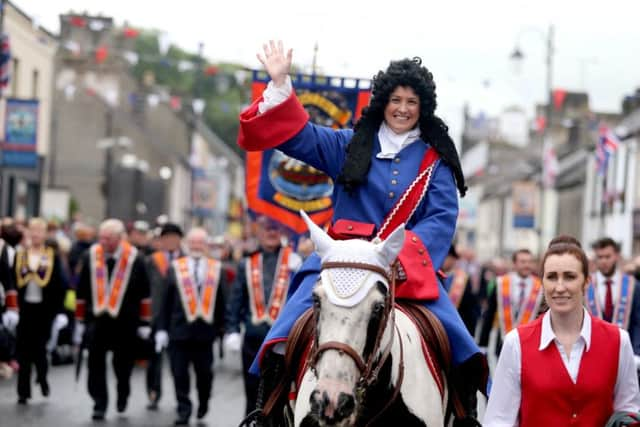Stirrups worn by King Billy at the Boyne up for auction


Just days before the 12th of July, the stirrups are to be auctioned at Christie’s, London and are likely to fetch tens of thousands of pounds.
Historian Dr David Hume told the BBC the stirrups are “a very significant artefact”.
Advertisement
Hide AdAdvertisement
Hide AdHe said: “It’s not often items like this come on the market,” he said, but the success of the auction depends on who is interested as the estimated price seems “quite high for a pair of stirrups”.


Serious action
Dr Hume says King William was in the “thick of the battle” at the Boyne, adding: “His horse got stuck in the mud.”
On their website, Christie’s say the stirrups were made “for the coronation of Charles I, and were later used by William III in the Battle of the Boyne (1690).”
In an article on Christies.com about items with links to royalty, the prestigious action house writes: “These riding stirrups were made for the coronation of Charles I, and were later used by William III in the Battle of the Boyne (1690). Charles I became King in 1625, but his coronation did not take place until the following year; 1626 is inscribed on the leather of these stirrups, next to a crown with the cypher C.R.
Advertisement
Hide AdAdvertisement
Hide Ad

“Although there are no detailed depictions of the trappings of Charles I’s horse, we know that the coronation procession by barge from Hampton Court to Westminster was derailed by strong tides, forcing Charles to make the last part of the journey on horse — with his feet secured by these very stirrups.”
The article continues: “This royal provenance is given credence by entries to the 19th-century journal Notes and Queries, self-described as a ‘medium of inter-communication’ for ‘literary men’. In Volume VII of the 4th Series, printed in 1871, Major Stewart Blacker writes, ‘The stirrups, however, bear evidence… as being the property of an earlier king than William III, viz. Charles I… the leather was looped on, is plainly marked, dotted or inscribed, a royal crown, with the cypher C.R. and the date 1626 beneath.’
“In the previous edition of Notes and Queries, a correspondent had written: ‘Some time previous to the month of August 1835, I saw in the house… a pair of stirrups, which were then very carefully preserved, and were represented (no doubt truly) as what had been used by King William III at the battle of the Boyne.’”
The auction house said the stirrups are perhaps the only riding stirrups with a royal association from the 17th century, writing: “William’s use of accoutrements belonging to his grandfather, Charles I, such as these stirrups, was a symbolic gesture — he had been born and raised in Holland, and invited to take the British throne by influential British Protestants, deposing his Catholic father-in-law James II in the process. It is believed that no other pairs of 17th-century stirrups with a royal association are known to survive.”